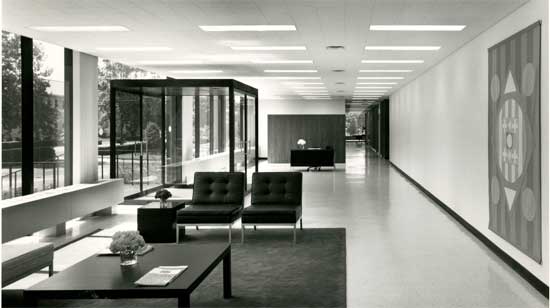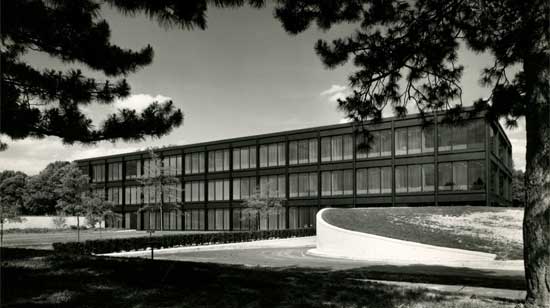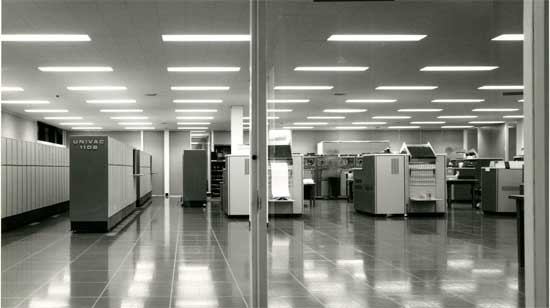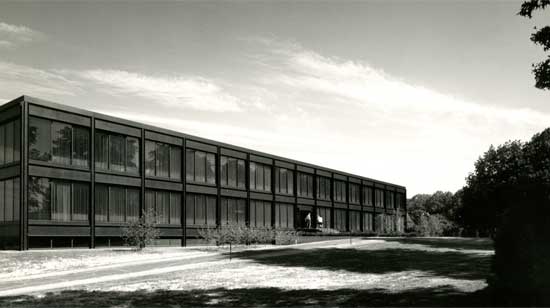About the Geophysical Fluid Dynamics Laboratory

GFDL's mission is to be a world leader in the production of timely and reliable knowledge and assessments on natural climate variability and anthropogenic changes and in the development of the required earth system models.
GFDL works cooperatively in NOAA to advance its expert assessments of changes in national and global climate through research, improved models, and products. For an overview of GFDL's work, see our Fact Sheet.
Getting Acquainted with GFDL's Director, V. "Ram" Ramaswamy
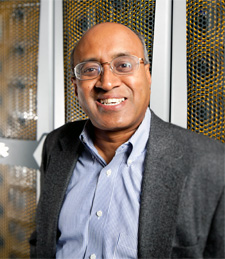
GFDL Director, V. Ramaswamy
Growing up in northern India in the 1960s and 1970s, Venkatachalam "Ram" Ramaswamy learned early that he liked to do science, and that excelling in science was a must and could unlock the gates to a better life and living—a lesson that has followed him across the Atlantic to the U.S. and to Princeton University's Forrestal Campus, where he has directed NOAA's Geophysical Fluid Dynamics Laboratory for the last three years. "Admission to science classes was pretty competitive, and not everyone earned admission," recounted Ramaswamy, the son of a research chemist. "India was and continues to be a big country with lots of graduates coming out every year. There were only a few top ranked colleges. Everyone wanted to get in there—there was a lot of pressure." India's hierarchical society (a vestige of British colonization of India), Ramaswamy said, added to this sense of competitiveness. "You had to have a bachelor's and then a master's degree to go into a certain line," he said. Growing up in a middle class family in a developing country gave him an edge.
After earning Bachelor and Master degrees in Physics from Delhi University, he came to the U.S. in 1977, first to Purdue University, then to SUNY-Albany in New York where he pursued a Ph.D. He then moved to Boulder, Colorado in 1982, where he concluded his doctoral thesis and pursued a post-doctoral fellowship in the Advanced Study Program at the National Center for Atmospheric Research (NCAR). Ramaswamy stayed at NCAR until 1985; later that year, he accepted a position at GFDL, where he has been ever since. Appointed Acting Lab Director in January 2007 after his predecessor Ants Leetma retired, and then becoming the laboratory's Director in November 2008, Ramaswamy leads a team of scientists dedicated to state-of-the-art climate modeling and world-class research into climate and climate change.
Their research matters, he said, because it seeks to unlock the puzzles in climate science, advance the basic understanding of the climate system and climate change, and bring the benefit of that knowledge to society. "Climate change research is very important because one needs to understand how and why it has changed and is changing, how rapidly, by which mechanisms, and determine the impacts on key climate variables" he said. "What has been most special in the last 50 years is the expansion of knowledge on climate processes, variations and change – on the short and long timescales, and including the emergence of the knowledge of human influence on climate. There is influence through both natural factors and human factors, and the latter's role has become evident in the climate trends of the past half-century." An improved scientific understanding and modeling of the Earth's climate system, Ramaswamy said, is crucial for understanding its past, present and future trajectories, enabling reliable projections and predictions to be made, and applying the results with increased confidence to diverse sectors that require information, data and products related to climate and climate change.
Overseeing this research, Ramaswamy said, comes with concerns. The lab director cited balancing an uncertain budget with important and necessary scientific pursuits as the most challenging aspect of his leadership duties. "It is important for the research to be sustained for a long period of time and be rigorous, but if we don't have assurance of sustained funding it becomes difficult, especially in the matter of attracting the best and brightest to pursue the subject with needed commitment, and to pursue the "big" initiatives to arrive at major findings and conclusions that benefit the nation," he said. Still, budgetary burdens fail to diminish the pleasure he derives from sharing GFDL's scientific findings with the larger community, including major climate impact issues such as extreme events, changes in heat and precipitation patterns, sea-level change, etc . "What I have come to enjoy is communicating our results at the frontiers of climate science and how we are addressing gaps and unresolved questions," he said. "It's about shedding light on the key elements of climate and climate change, assessment of their importance and the advances made, and our confidence level in the scientific findings and its applications," he said.
Since 1955 when the lab was founded, Ramaswamy said, GFDL has been world-renowned for preeminent climate modeling and for pioneering research in climate sciences. He aims to continue this leadership tradition and enhance it further. "So, now, branching off into different areas that are interlinked with climate is really a fun part of leading this lab," he said. "It's a delight to work with the scientists and group leaders, prepare a vision of where we wish to go in the next five to 10 years, then implement the plans, advance the science and see it getting applied practically." When asked which instrument is most indispensable to the GFDL team, Ramaswamy didn't hesitate. "Computers," he said. "We need to make lots of headway in the field of computational climate modeling and capture the complexity and thus the realism of the Earth System," he said. "This lab gets budgeted for a new computer about every four years, and technology is advancing so fast that we probably need it every two to three years to be able to do more refined modeling and computations, enhance our understanding of the science, and then use that as a basis to build toward ever more accurate projections for the future."
Continue reading

